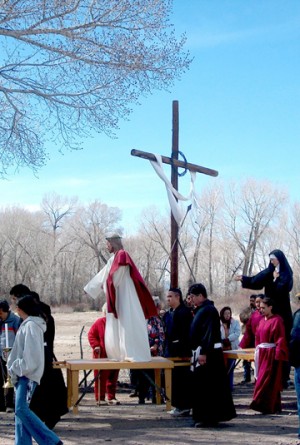by John Mattingly
Editor’s Note: Part 1 of this series ran in the May 2008 Colorado Central Magazine.
Last month, Hal Walter described a rural-residential real estate situation in the greater Wet Mountain Valley that is mirrored to the west in the greater Moffat-Crestone region. The class of homes for sale ranges from a single-wide mobile home on a few acres to a super-sized custom home on a tastefully landscaped developed lot. There also are a lot of double-wides on 35 to 500 acres, few with any farmland or substantial water rights. Though different in appearance, the residences share the common element of being for sale in a market that is more like a morgue. A significant number of homes are simply abandoned and empty.
In addition to the forces and factors mentioned by Mr. Walter, I’d like to suggest there are a couple of things at work in this crisis that aren’t as obvious as the weeds growing up around the front doors.
1. Credit and an expanding middle class. Prior to the Great Depression, fewer than 25 percent of U.S. citizens owned their own home. Worldwide, the percentage was even less. Homes and apartment complexes were owned by a residual nobility (the old First Estate), or “an industrial aristocrat,” as my grandfather called his landlord. Following labor riots in the early 1930s, Congress passed the National Housing Act in 1934 which created the Federal Housing Association (FHA). The Act regulated mortgage interest rates, opened the door for the secondary market (Fannie Mae and Freddie Mac) and changed the criteria of loan appraisal, placing 60% of the value on relative economic stability and protection from adverse influences, which made it considerably easier to get a loan.
The rationale underlying FHA, it may be hypothesized, was to get the working class to invest in the capitalist system through the single family home, thus mollify proletarian discontent. It worked. If a worker owned a home in which his or her family resided, and on which there was a mortgage, the worker had both an obligation and something to lose, a combination that made workers less likely to riot, or even complain.
Mortgages were written in record numbers through the 1930s and early ‘40s, but the first really big flush of mortgages occurred after WWII, when millions of loans were made to returning vets. This demand for credit ignited the suburban explosion and advent of the shopping plaza. I remember my father returning from the War and, against the advice of both my grandparents (who rented their homes), my father bravely tied into a $10,000, 30-year loan at three percent from the local Savings and Loan to build our house in Fort Collins. Before long, we were a nuclear family among nuclear families, each with three to five kids, a TV, washer/dryer, modern refrigerator, and a mortgage.
The next big flush of mortgages came in the mid-1960s with formation of the Department of Housing and Urban Development (HUD) under Johnson’s War on Poverty, which made home loans available to a deeper reach of the underclass. In all cases, federal stimulation of credit enabled more and more folks to ow’n (owe on) their own home. While this model enjoyed promotion as the American Dream, it came with the shackle of monthly payments, taxes, and insurance. Though some people sensed it, very few understood that whoever controlled the housing debt exerted significant control over the residents, and thus, over the economic culture. The value of a house as human shelter is primary and necessary, no question, but one should never overlook the extraordinary political/social/economic value of controlling the housing debt.
What happened in 2008 (and is still going on as the housing bubble continues to compress) could be:
(a) an inevitable, cyclical cycle that will return housing debt to to the working class with sensible metrics;
(b) so many players got in the housing debt game, playing it from so many angles, that they all lost control of the game;
(c) a concerted effort by the “old aristocracy” to regain control of housing and return the working class to renting.
Of course, there are probably arguments and elements of each of these involved, as well as this …
2. Off the gold standard. In the early 1970s, another global factor mixed into the economic stew of home ownership. Not only did the ‘60s disturb the social pattern of the nuclear family, but the world economy went off the gold, or gold-silver standard, led by the U.S. Prior to abandoning the gold standard, the nations of the world obeyed a more or less fixed currency exchange rate. Under the terms of the Bretton Woods Conference of 1944, the U.S. dollar was worth pretty much the same number of marks, rials, francs, or (any currency in the world) without much fluctuation.
Leaving the gold standard caused the world’s currencies to float relative to one another, but it also allowed nations to print money on the justification that the economy had reached a sophisticated level governable by metrics of productivity, money supply, GDP, CPI, exchange velocity, and a menu of other functions that grew by the year as economists applied their genius to figuring out what was really going on. Some say it became like the joke of the four blind men trying to describe an elephant, one holding the trunk, one the leg, another the head, and the last man rubbing the rump.
The more analysis applied to understanding a world economy in which nations were free to print money never hit a crescendo of pure lucidity, nor did it fool everyone. In the manner of herd mammals, humans quickly figured out that the avalanche of liquidity in the money supply directed money, capital, and investment into hard assets. Things that appreciated, or things that at least held their value relative to fluctuations in the value of the currency, such as land, houses, buildings, and, to some extent, equity ownership in corporations represented by shares of stock.
Foremost on the list of things that held their value was, of course, the American Home. From the early 1970s, from the date the U.S. said goodbye to the gold standard, American homes began to increase in value, even if the owner did nothing to them, even if the owner used and abused the home. People bragged about buying a house for $X and selling it for $3X or more, and sometimes the appreciation period was appealingly short. It’s as American as Mom and Apple Pie to have bought and sold an American Home at a profit in the last 30 years or so. Many people were catapulted from poverty to wealth by simply buying and selling a few homes. It was a wide open game, stimulated by the community of real estate brokers, who, though they were, in some cases, no different than a stock broker churning an account, encouraged “investors” to buy and flip the American Home as if it was a hot stock.
And then there were those big-toothed people who went on TV and wrote books about how to build a real estate empire with no money. No comment.
A large part of what was really going on in the frenzy of “investment” in homes was not an increase in the value of the American Home. What was really going on was a depreciation of the dollars used to value the American Home, a depreciation caused, at bottom, by excess money in circulation. Of course, the idea that the American Home was an “investment” went wild in the new millennium and is now facing the same fate as a pump-and-dump stock on the OTC.
In a previous column in the spring of 2008, I put forward the suggestion that a house should not be viewed as an investment. A house is not like a stock, or interest-bearing investment vehicle. A house is one of the basic human needs, as we are seeing dramatically today in Haiti. If anything, a house is most like a car, something we need, and something that should represent a solid and reasonable allocation of our resources relative to that need. Building a trophy home is kind of like driving a Lamborghini or Ferrari to flash one’s balance sheet.
Of course, some people figured out what was going on and understood the best species of American Home, land, or hard asset, was one with a positive cash flow. Profitable farms, rental homes/duplexes, apartment complexes, and/or fully-leased commercial buildings escaped much of the recent economic downturn, because this caliber of asset, if well managed, appreciates both on the balance sheet and on the profit and loss statement — or, more to the point, because of the P&L Statement. Hard assets of this nature have made many people rich in the right way, while confusing others who thought they were on the bandwagon, only to learn they were under its wheels.
Many folks thought ANY asset, such as a house, would make money and build wealth, and that was true only for inconsistent, selected periods in random locations. On balance, the value of a home in the Wet Mountain Valley, or in the Moffat-Crestone region, or almost anywhere, will likely be valued by the metrics of value-added, cap rate, and revenue, not by an expectation that value will automatically increase.
Footnote: What is a cap rate? Cap rate = net revenue generated by an asset divided by the appropriate, or desired, rate of return on the invested capital. For example, the value of a home is equal to annual rental income (or equivalent, if one is living in the home) minus taxes, insurance, and maintenance which yields a net revenue number. Divide the net revenue number by desired yield. For a home, the desired yield rate could be anywhere from 4% to 12%, depending on a host of factors.
For example, say a house rents (or would rent) for $1000 a month, or $12,000 gross revenue per year. After taxes, insurance and maintenance, the net revenue is, say, $9,000. If you think your capital is worth 5% in the market, divide $9,000 by .05 which means the house is worth $180,000. But if you need 10% on your capital, the house is only worth $90,000. With the flood of liquidity in the worldwide money supply, the rate of return demanded on invested capital is destined to go up, which means the value of most homes will go down.
That isn’t to say that a particular home in a special location won’t be worth a mint, but be wary of anyone who tells you so.
John Mattingly cultivates prose, among other things, and was most recently seen near Creede.

